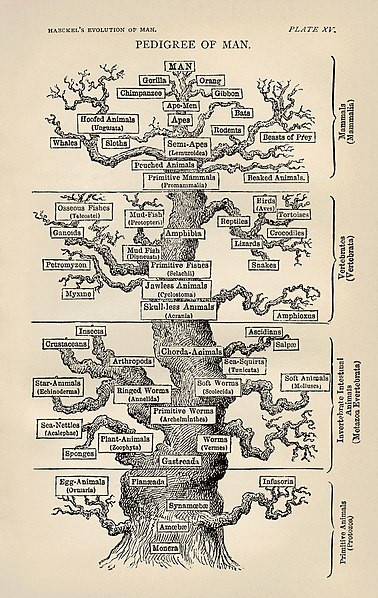Every year around the US, creationists try to pass bills in state Legislatures either limiting discussion of evolution in classrooms or promoting a strategy called “teaching the controversy.” The latter approach essentially requires science teachers to teach students about both the scientific evidence for evolution and religiously-based philosophy that claims that evolution does not exist (or, alternatively, that some aspects of evolution have occurred, but not others).
Evolution is a fact, backed up by copious amounts of evidence. Natural selection, the modern theory describing how evolution happens, is probably about as well-supported as other scientific theories you may have heard about, such as the theory of gravity or cell theory. Some details of the theory of natural selection are currently being fleshed-out by scientists- a normal and healthy part of the scientific process. There is no debate, however, that natural selection is the best explanation we have today to explain the evidence for evolution that we see all around us. Philosophy and religion can offer no better, evidence-based, explanation of how evolution occurs.
This year, Florida Senate Bill 1854 would require “a thorough presentation and critical analysis of the scientific theory of evolution.” Sounds reasonable, right? Well, Florida State Science standards already require critical discussion in the science classroom. It turns out that the sponsor of this bill, Senator Stephen Wise, sponsored a bill in 2009 that advocated a “teach the controversy” approach to evolution. That bill failed, so he’s apparently trying to sneak religion into science classrooms again this year.
What does Sen. Wise suggest is a good “critical” alternative to evolution? He won’t say. In interviews by reporters, he calls it “non-evolution” or a “theory of whatever.” (In 2009, he called for teaching “intelligent design,” a Christianity-based philosophy which has legally been ruled religion, not science.) If this bill passes, Florida will be opened up to lawsuits similar to those that have cost other states quite a bit of money. It will also presumably have a chilling effect on the state’s efforts to attract high-tech businesses, such as medical research. Perhaps most importantly, it will teach our students something that just isn’t true. Evolution has occurred, and is occurring, and natural selection is the best explanation we have based on the evidence we have.
Floridians! If the prospect of poor science education, revenue-draining lawsuits, and general philosophical confusion bothers you, then you can sign this petition! One useful feature is that this petition sends an e-mail to your state legislatures when you sign, which helps make a greater impact. Non-Floridians can sign too, but the signatures of FL residents will have greater impact. I also urge you to add comments, as well as just signing. And, pass this on!















